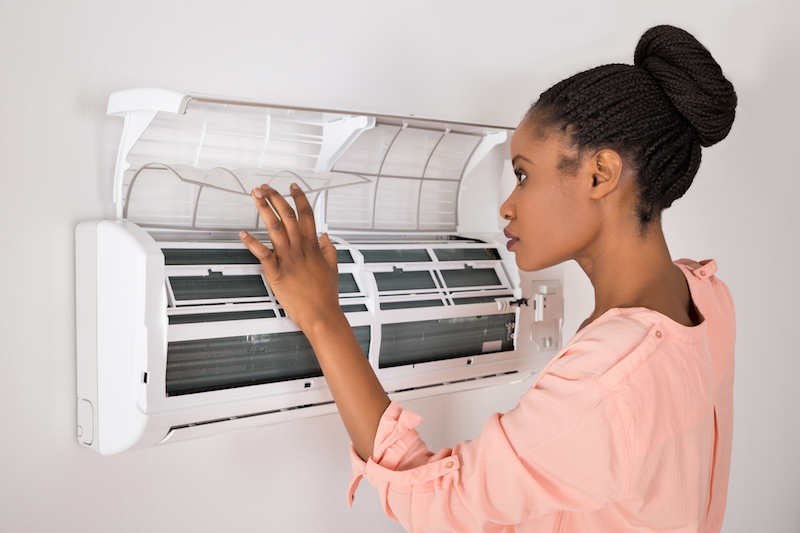
You shouldn’t have to sacrifice comfort or empty your wallet to keep your residence at a pleasant temp during summer weather.
But what is the right setting, exactly? We go over ideas from energy experts so you can choose the best setting for your loved ones.
Here’s what we advise for the most energy-efficient setting for air conditioning in Dundas and Northfield.
Recommended Thermostat Settings for Summer
Most people find setting the thermostat at 72-73 degrees is most comfortable. However, if there’s a major difference between your indoor and outdoor warmth, your cooling bills will be higher.
This is our advice based on the U.S. Department of Energy (DOE) and ENERGY STAR®.
While at home: 78 degrees. While that seems too high, there are ways you can keep your home pleasant without having the air conditioner running all the time.
Keeping windows and curtains closed during the day keeps cool air where it belongs—inside. Some window solutions, including honeycomb shades or plantation shutters, are designed to offer extra insulation and enhanced energy conservation.
If you have ceiling fans in your residence, the DOE says you can raise thermostat temperatures about 4 degrees warmer without sacrificing comfort. That’s because they freshen by a windchill effect. Since they cool people, not rooms, switch them off when you exit a room.
If 78 degrees still appears too hot on the surface, try conducting a test for a week or so. Begin by upping your temperature to 78 degrees while you’re at your house. Then, gradually lower it while using the suggestions above. You could be shocked at how comfortable you feel at a warmer temperature setting.
While away: 88 degrees. There’s no need to keep the AC working all day while your house is vacant. Moving the temp 7–10 degrees warmer can save you anywhere from 5–15% on your electrical expenses, according to the DOE.
When you arrive home, don’t be tempted to switch your thermostat under 78 to cool your home more rapidly. This isn’t effective and usually produces a more expensive electrical bill.
A programmable thermostat is a helpful method to keep your settings controlled, but you have to set programs. If you don’t use programs, you run the risk of forgetting to change the set temperature when you go.
If you need a convenient remedy, think about buying a smart thermostat. This thermostat links with your phone, so it realizes when you’re at home and when you’re gone. Then it intuitively changes temperature settings for maximum savings. How much exactly? An estimated $180 yearly on heating and cooling, according to ENERGY STAR.
Another plus of getting a smart thermostat? You can use your phone to keep an eye on and regulate temperature settings from almost anywhere.
While sleeping: Around 70 degrees. While ENERGY STAR recommends 82 degrees, that might be unpleasant for most families. The majority of people sleep better when their sleeping space is chilled, so that’s why the National Sleep Foundation advises 60–67 degrees. But that could be too chilly, depending on your clothing and blanket preference.
We recommend following a comparable test over a week, putting your temp higher and steadily turning it down to pick the ideal temp for your house. On mild nights, you could find keeping windows open at night and using a ceiling fan is a superior solution than running the air conditioner.
More Approaches to Conserve Energy This Summer
There are added ways you can conserve money on cooling bills throughout hot weather.
- Upgrade to an energy-efficient cooling system. Central air conditioners only are effective for about 12–15 years and lose efficiency as they get older. A new air conditioner can keep your house comfier while keeping utility costs low.
- Set regular air conditioner service. Routine air conditioner maintenance keeps your unit operating properly and may help it run at better efficiency. It can also help extend its life cycle, since it helps professionals to find seemingly insignificant problems before they lead to a major meltdown.
- Change air filters often. Follow manufacturer instructions for changing your air filter. A clogged filter can cause your system to short cycle, or run too frequently, and raise your utility.
- Inspect attic insulation levels. Just about 90% of homes in the U.S. don’t have enough insulation, according to the Insulation Institute. The majority of southern climates should have 13–14” of attic insulation, while northern climates should have 16–18”.
- Have your ductwork examined. Ductwork that has separated over time can leak cold air into your attic, walls or crawl space. This can result in big comfort issues in your residence, including hot and cold spots.
- Seal cracks, doors and windows. Keep muggy air in its place by plugging openings. You can also caulk or weather strip doors to seal more cold air within your home.
Save More Energy This Summer with Better Air
If you need to conserve more energy during warm weather, our Better Air experts can help. Reach us at 507-663-1208 or contact us online for extra details about our energy-saving cooling solutions.
